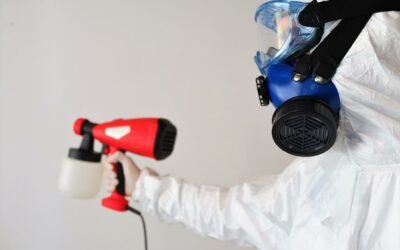Are you concerned about formaldehyde in your indoor air? An air purifier can help you remove this harmful chemical.
In this article, we will explore the importance of formaldehyde removal and the technology behind air purifiers. We will also discuss the factors to consider when choosing an air purifier and provide a list of top air purifiers for formaldehyde removal.
Additionally, we will share tips for maintaining an effective air purifier.
Take control of your indoor air quality with an air purifier for formaldehyde.
Key Takeaways
- Formaldehyde is a harmful gas that can cause respiratory issues, eye irritation, and cancer, making it important to remove it from indoor spaces.
- Air purifiers with activated carbon filters, HEPA filters, and photocatalytic oxidation technology are effective in removing formaldehyde.
- When choosing an air purifier, consider its specific design for targeting formaldehyde, the size of the room, noise levels, and maintenance requirements.
- Regularly cleaning and replacing filters is crucial for maintaining the effectiveness of the air purifier and ensuring optimal performance in removing formaldehyde.
The Importance of Formaldehyde Removal
If you're concerned about the quality of the air you breathe, removing formaldehyde is of utmost importance. Formaldehyde is a colorless gas with a pungent odor that's commonly found in indoor environments. It's released from various sources such as furniture, carpets, and building materials. Exposure to formaldehyde can have detrimental effects on your health, including respiratory issues, eye irritation, and even cancer.
Formaldehyde is a volatile organic compound (VOC) that can easily evaporate into the air, making it highly present in indoor spaces. It's known to cause allergies, asthma attacks, and other respiratory problems, especially in individuals with sensitivities. Hence, it's crucial to ensure that the air you breathe is free from formaldehyde to maintain a healthy living environment.
One effective way to remove formaldehyde from the air is by using an air purifier specifically designed to eliminate VOCs. These air purifiers are equipped with activated carbon filters that effectively trap and neutralize formaldehyde molecules. The activated carbon has a large surface area that can adsorb formaldehyde, preventing it from being released back into the air. Additionally, some air purifiers also utilize other technologies such as HEPA filters to remove other harmful pollutants, ensuring cleaner and fresher air.
Understanding Air Purifier Technology
Curious about how air purifiers work to remove formaldehyde? Understanding air purifier technology is essential in order to grasp how these devices effectively remove formaldehyde from the air.
Air purifiers utilize various technologies to eliminate formaldehyde molecules and other airborne contaminants. One common technology is activated carbon filtration. Activated carbon filters contain millions of tiny pores that trap and absorb formaldehyde molecules, effectively removing them from the air.
Another technology used is high-efficiency particulate air (HEPA) filtration. HEPA filters are designed to capture particles as small as 0.3 microns, including formaldehyde particles. These filters work by forcing air through a fine mesh, which traps the formaldehyde particles and prevents them from recirculating.
Additionally, some air purifiers employ photocatalytic oxidation technology. This technology uses a catalyst, such as titanium dioxide, along with ultraviolet light to break down formaldehyde into harmless substances.
Understanding these technologies will help you choose the most suitable air purifier for removing formaldehyde from your indoor environment.
Factors to Consider When Choosing an Air Purifier
When choosing an air purifier for formaldehyde, there are several factors to consider.
First and foremost, you need to look for an air purifier that specifically targets formaldehyde. This is because not all air purifiers are designed to effectively remove formaldehyde from the air. Look for purifiers that use activated carbon filters or other specialized filters that can effectively capture and neutralize formaldehyde molecules.
Another important factor to consider is the size of the room or area where the air purifier will be used. Air purifiers have different coverage capacities, so it's essential to choose one that's suitable for the size of the room. A purifier with a higher Clean Air Delivery Rate (CADR) is generally more efficient in larger spaces.
Noise levels should also be taken into account. Some air purifiers can be quite noisy, which can be bothersome, especially if you plan to use it in a bedroom or office. Look for purifiers with adjustable fan speeds or a sleep mode that operates quietly.
Additionally, consider the maintenance requirements of the air purifier. Filters need to be replaced periodically, so it's important to choose a purifier that has easily accessible and affordable replacement filters. Some purifiers also have indicator lights that signal when it's time to change the filters, making maintenance easier.
Lastly, consider the overall cost of the air purifier, including the initial purchase price and the cost of replacement filters. Some purifiers may be more expensive upfront but have lower maintenance costs, while others may be cheaper initially but require more frequent and costly filter replacements.
Top Air Purifiers for Formaldehyde Removal
To continue the discussion from the previous subtopic, let's explore the top air purifiers for removing formaldehyde. Formaldehyde is a harmful volatile organic compound (VOC) found in many household items such as furniture, carpets, and cleaning products. It can cause respiratory issues, irritation, and even cancer. Therefore, it is crucial to choose an air purifier that effectively removes formaldehyde from the air.
Here is a table showcasing five top air purifiers for formaldehyde removal:
| Air Purifier | CADR (Clean Air Delivery Rate) for Formaldehyde | Filter Type |
|---|---|---|
| Blueair Classic 480i | 238 m³/h | HEPASilent Technology |
| Rabbit Air MinusA2 | 223 m³/h | BioGS HEPA Filter |
| Winix HR900 | 188 m³/h | True HEPA Filter |
| Coway Airmega 400 | 186 m³/h | Max2 Filter |
| Levoit Core P350 | 167 m³/h | True HEPA Filter with Activated Carbon |
These air purifiers are equipped with advanced filtration systems that effectively capture and eliminate formaldehyde particles from the air. The CADR for formaldehyde indicates the purifier's ability to remove this specific pollutant. The higher the CADR, the better the purifier's performance.
When selecting an air purifier for formaldehyde removal, it is essential to consider the room size, the purifier's coverage area, and the replacement cost of filters. Additionally, looking for additional features like smart sensors, automatic modes, and noise levels can enhance the overall performance and convenience of the air purifier.
Tips for Maintaining an Effective Air Purifier
To maintain an effective air purifier, you should regularly clean and replace the filters. The filters in an air purifier are responsible for capturing and removing airborne pollutants, such as formaldehyde, from the air. Over time, these filters can become clogged with particles, reducing their efficiency and limiting their ability to effectively purify the air. Cleaning the filters on a regular basis is essential to ensure that your air purifier is operating at its maximum potential.
To clean the filters, start by turning off the air purifier and unplugging it from the power source. Remove the filters from the unit according to the manufacturer's instructions. Using a soft brush or vacuum cleaner with a brush attachment, gently remove the accumulated dust and debris from the filters. Be careful not to damage the filters during the cleaning process. If the filters are washable, you can rinse them with water or use a mild detergent to remove any stubborn particles. Allow the filters to air dry completely before reinstalling them in the air purifier.
In addition to regular cleaning, it's important to replace the filters at the recommended intervals. Most air purifiers have specific guidelines on when to replace the filters, which can vary depending on the model and usage. Ignoring the filter replacement schedule can lead to decreased performance and an increase in airborne pollutants in your indoor environment.
Conclusion
In conclusion, the removal of formaldehyde from indoor air is crucial for maintaining a healthy and safe environment.
Air purifiers equipped with advanced technology are effective in eliminating formaldehyde particles.
When selecting an air purifier, important factors to consider include the size of the room, the air purifier's Clean Air Delivery Rate (CADR), and the presence of additional filtration technologies.
Regular maintenance of the air purifier is essential to ensure its continued effectiveness.
By following these guidelines, individuals can effectively combat formaldehyde pollution and improve indoor air quality.






0 Comments